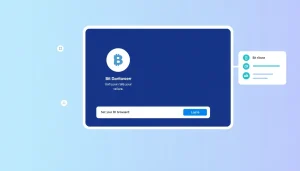Maximize Productivity with Professional Virtual Assistants for Your Business Needs

Understanding Virtual Assistants
What Are Virtual Assistants?
A virtual assistant (VA) is an independent contractor providing various services, primarily administrative, from a remote location. In today’s increasingly digital world, virtual assistants have become indispensable for entrepreneurs, small business owners, and even large corporations. By leveraging technology, VAs can manage tasks that traditionally required physical presence within an office, allowing businesses to operate more efficiently and cost-effectively.
Common Services Offered by Virtual Assistants
Virtual assistants offer a wide array of services tailored to meet the unique needs of their clients. The most common tasks include:
- Administrative Support: Managing emails, calendars, and appointments, as well as booking travel arrangements.
- Customer Service: Responding to customer inquiries, handling complaints, and providing general support.
- Social Media Management: Creating content, scheduling posts, and engaging with followers on various platforms.
- Content Creation: Writing articles, blog posts, and marketing materials.
- Data Entry and Management: Organizing data in spreadsheets and databases.
- Research: Conducting market research or gathering information to support business decisions.
- Accounting: Invoicing clients, tracking expenses, and managing bookkeeping tasks.
Key Skills Required for Virtual Assistants
To be effective, virtual assistants must possess a diverse set of skills, including:
- Technical Proficiency: Familiarity with various software tools such as Microsoft Office, Google Workspace, CRM platforms, and project management tools.
- Communication Skills: Strong written and verbal communication skills to convey information clearly and effectively.
- Time Management: The ability to prioritize tasks and manage time efficiently to meet deadlines.
- Problem-Solving: Quick thinking to resolve issues and adapt to changing situations.
- Attention to Detail: Ensuring accuracy in all tasks, from data entry to content creation.
Benefits of Hiring Virtual Assistants
How Virtual Assistants Improve Efficiency
One of the primary advantages of hiring virtual assistants is the significant improvement in operational efficiency. By outsourcing routine tasks, business owners can redirect their focus to core activities that drive growth. For example, a company might hire a virtual assistant to handle customer inquiries, freeing up sales representatives to concentrate on closing deals. With VAs managing administrative duties, teams can work more productively, resulting in better overall business performance.
Cost Savings with Virtual Assistants
Employing a virtual assistant is often more economical than hiring a full-time employee. Businesses can save on costs associated with payroll taxes, benefits, and office space. Virtual assistants typically work on a contractual basis, allowing organizations to pay only for the hours worked or services rendered. This flexibility helps businesses maintain lean operational costs, especially for startups and small enterprises.
Flexibility and Scalability of Virtual Assistant Support
Virtual assistants offer unparalleled flexibility regarding workload. Businesses can scale their assistant services up or down based on seasonal demands, project-specific needs, or budgetary constraints. For instance, during peak seasons, companies can hire additional VAs to manage increased workloads without the long-term commitment of a permanent hire. This scalability allows businesses to remain agile and responsive to market changes.
Choosing the Right Virtual Assistant
Factors to Consider When Hiring
Selecting the right virtual assistant is critical to the successful outsourcing of tasks. Key factors to consider include:
- Experience: Look for a VA with a proven track record in your specific industry or task area.
- Skill Set: Ensure the VA possesses the skills relevant to the tasks you need assistance with.
- Availability: Confirm their availability aligns with your working hours and project deadlines.
- Technology Use: Assess their competence with the tools and software your business uses.
Questions to Ask Potential Virtual Assistants
When interviewing potential VAs, consider asking these essential questions:
- What specific services do you offer, and can you provide examples of past work?
- What is your preferred method of communication, and how often do you provide updates?
- How do you handle conflicts or misunderstandings with clients?
- What tools and software are you familiar with?
- Can you provide references or testimonials from previous clients?
Assessing Compatibility and Skills
Compatibility between a virtual assistant and your business is vital for a successful working relationship. Consider conducting a trial period before making a long-term commitment. This will allow you to assess their work style and output quality, ensuring that they align with your expectations and company culture.
Challenges in Managing Virtual Assistants
Overcoming Communication Barriers
While virtual assistants offer numerous benefits, managing them can come with its challenges, particularly regarding communication. Time zone differences and various communication preferences can create misunderstandings. To overcome these obstacles, establish clear channels of communication, such as videoconferencing tools, instant messaging apps, and email. Regular check-ins can help maintain an open line of dialogue, preventing issues from arising.
Monitoring Performance Effectively
Monitoring the performance of virtual assistants can be challenging, especially when work is done remotely. Implement performance metrics to evaluate the effectiveness and efficiency of their work. You might use tools like project management software to track progress on assignments or request periodic progress reports detailing completed tasks and time spent on them. This ensures accountability while also providing opportunities for feedback and improvement.
Setting Clear Expectations
To foster a productive working relationship, it’s essential to set clear expectations from the outset. This includes providing detailed task descriptions, deadlines, and the level of communication required. By clearly outlining what you need, you minimize the chances of confusion and establish a basis for evaluating performance.
Future Trends in Virtual Assistance
Technological Advances Shaping Virtual Assistance
The landscape of virtual assistance is continually evolving, driven by technological advancements. The rise of cloud-based collaboration tools is enhancing the way VAs interact with their clients. Tools like Trello, Asana, and Slack facilitate real-time collaboration, enabling VAs to work efficiently from anywhere in the world. Additionally, automation software is increasingly being used to enhance productivity by allowing VAs to handle repetitive tasks without manual input.
The Rise of AI in Virtual Assistant Roles
Artificial intelligence is beginning to play a significant role in the field of virtual assistance. AI-driven tools like chatbots and automated scheduling systems are helping to streamline tasks traditionally handled by human assistants. As these technologies advance, we can expect virtual assistants to increasingly focus on higher-level duties that require strategic thinking and decision-making.
The Increasing Demand for Specialized Virtual Assistants
As businesses continue to recognize the value of virtual assistance, there is a growing demand for specialized VAs. Areas such as digital marketing, social media management, and e-commerce are seeing a surge in the need for assistants with niche expertise. This trend indicates that hiring strategies will become more focused, allowing businesses to find VAs who are well-equipped to meet their specific needs.





